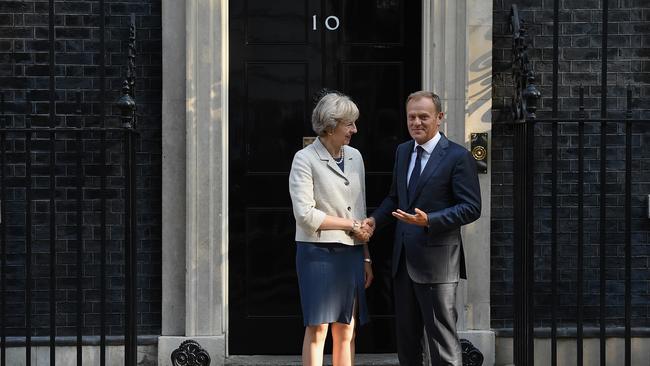OECD signals little Brexit impact
The OECD’s first outlook since Britan’s vote has found little downside for the global economy.

The outlook for the global economy hasn’t changed as a result of the UK’s vote to leave the European Union, according to leading indicators released on Thursday by the Organisation for Economic Cooperation and Development.
The Paris-based research body suspended publication of its gauge of future economic activity in July, saying the vote made it difficult to interpret a variety of data series that have a history of anticipating swings in future economic activity.
In advance of the vote, many economists worried an unprecedented decision by a large, developed economy to change its economic relationship with its neighbours could create high levels of uncertainty that would hinder growth in Europe and further afield.
But its composite leading indicators show that the vote to leave the EU has had little immediate impact outside the UK.
“Although there remains uncertainty about the nature of the agreement the UK will eventually conclude with the EU, the volatility in data that emerged in the weeks immediately following the referendum appears to have reduced,” the OECD said.
Indeed, improved prospects for a number of large economies suggest the global outlook has brightened over recent months, easing worries that a sharp slowdown is under way at a time when policy makers appear to be low on ammunition with which to boost activity.
The OECD’s leading indicators, based on information available for July, now point to steady growth in most developed economies, including the US But in contrast to the earlier months of 2016, they also point to pickups in a number of large developing economies, including China, Brazil and Russia.
To be sure, 2016 is set to mark another year of disappointing growth for the global economy. Economic growth in developed countries was the slowest in almost three years during the three months to June, with the US and the UK picking up, while the eurozone and Japan slowed.
But the leading indicators suggest a more widespread and sharper slowdown is unlikely, and that central bankers may not need to add to their stimulus measures.
Partly in response to worries about the global outlook, the European Central Bank in March announced a package of measures designed to boost growth and inflation. That followed similar action by the Bank of Japan in late January, while Sweden’s Riksbank and the Reserve Bank of India are among other central banks to have eased policy.
The OECD’s leading indicators are designed to provide early signals of turning points between the acceleration and slowing of economic activity. The changes in economic activity signaled by the indicators usually follow six to nine months after they are recorded.
The OECD’s composite leading indicator for its 34 members was steady at 99.7 in July. A reading below 100.0 points to growth that is slower than normal.
Dow Jones



To join the conversation, please log in. Don't have an account? Register
Join the conversation, you are commenting as Logout